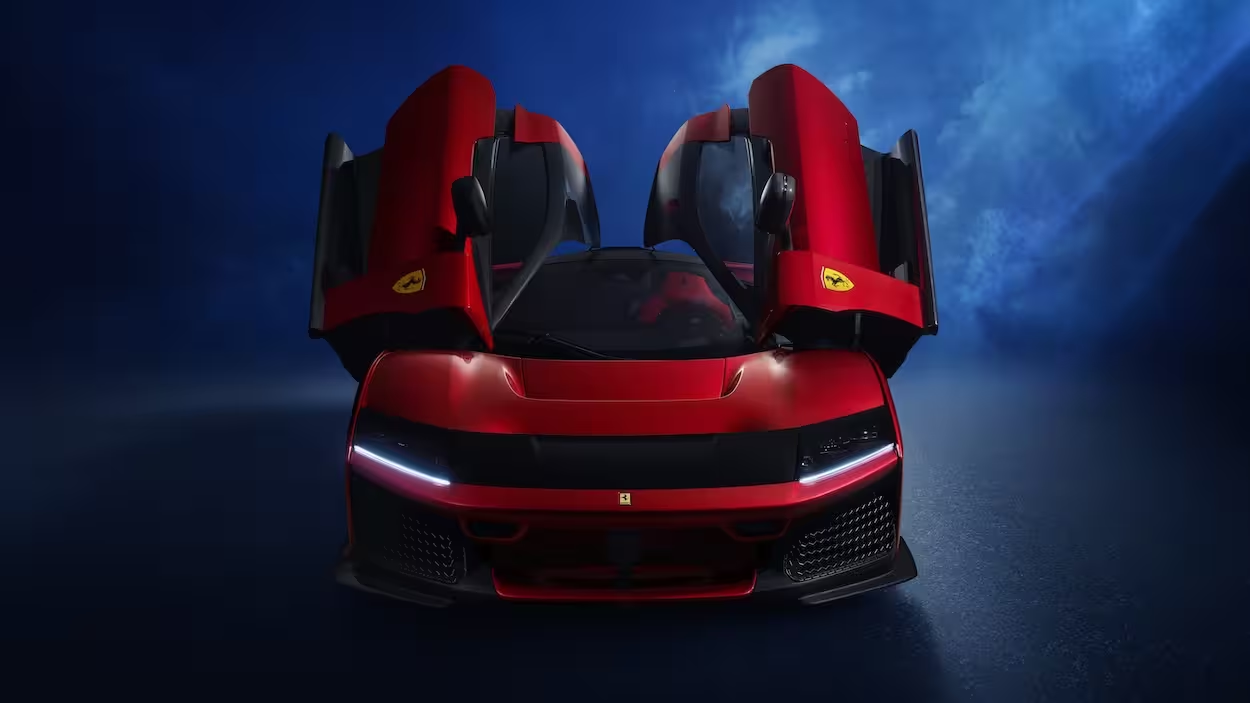F80: Ferrari’s Latest Supercar, destined to join iconic models from the 1984 GTO to the 2016 LaFerrari Aperta. The F80 is a showcase for the latest technology and performance from the marque and represents an extreme internal combustion engine development. With a combined maximum power of 1200 hp, the V6-hybrid powertrain of the F80 makes it the most powerful road car ever to come out of the gates of the Ferrari factory. A host of advanced technological solutions makes the F80 the new benchmark for innovation and engineering excellence.
Today, Ferrari unveiled the F80 and wrote a new chapter on the history of legendary supercars bearing the Prancing Horse badge. The F80 will be produced in a limited run of just 799 examples and joins the pantheon of icons such as the GTO, F40 and LaFerrari by showcasing the best that the Maranello-based marque has achieved in terms of technology and performance.
Since 1984, Ferrari has periodically released a new supercar representing its era’s pinnacle of cutting-edge technology and innovation and was destined to be enshrined in popular culture. Intended for the most discerning clients of the brand, these cars immediately became legends in their lifetime, making an indelible mark not only on the history of Ferrari but also on the history of the automobile itself.
The latest addition to this family, the F80, is tasked with embodying the ultimate in engineering for an internal-combustion-engined vehicle and employs all the most advanced technological solutions, including latest-generation hybrid technology for the powertrain, to achieve unparalleled levels of power and torque. Every aspect of the architecture is conceived to maximise performance, from the carbon-fibre chassis and extreme aerodynamic solutions far beyond anything seen before in a road-legal car, to the new active suspension optimised to let the driver wring every ounce of performance from the car on the track.
Unlike anything else in the current supercar world, the F80 combines all these attributes with uncompromising levels of usability on the road, where it can be driven easily. This ability shaped every choice in terms of technology and architecture to achieve the goal, which at first sight seems impossible, of creating a track-oriented…
Click Here to Read the Full Original Article at Paddock Magazine…

